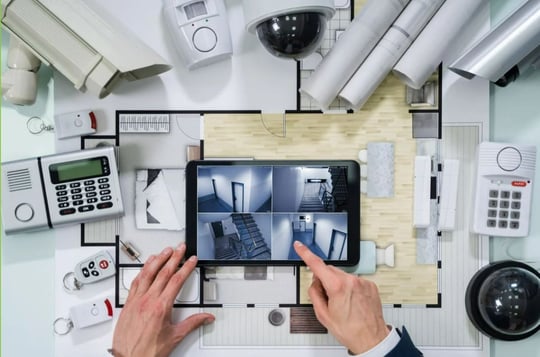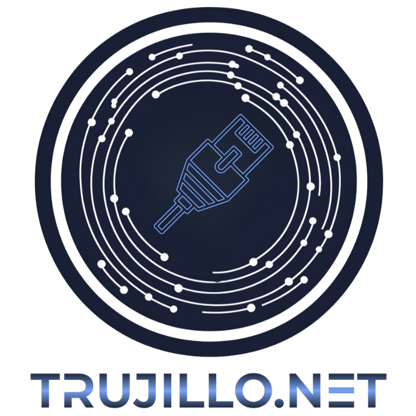5 Benefits of Installing a Commercial Camera System
Watch over what matters most. Install smart, HD surveillance. Protect your team and property.
4/27/20254 min read


Enhanced Security and Theft Prevention
Installing a commercial camera system is a crucial step towards enhancing the security of any business. With constant surveillance, these systems provide a vigilant watch over the premises, ensuring that every corner is monitored effectively. This visibility acts as a formidable deterrent against potential thieves and intruders, significantly reducing the likelihood of theft or criminal activity. When individuals are aware that they are being recorded, they are less inclined to engage in unlawful behavior, thereby fostering a safer environment for both employees and customers.
The presence of visible cameras not only deters crime but also instills a sense of security among employees and patrons. Knowing that a commercial camera system is in place promotes a feeling of safety, which can enhance employee morale and customer confidence. This protective aura contributes to creating a trustworthy establishment, where clients feel secure during their visits. Furthermore, the effectiveness of a well-placed camera is heightened by its visibility, as individuals are more likely to think twice before attempting any form of theft.
In the unfortunate event that a theft occurs, having a comprehensive video surveillance system becomes indispensable. The recorded footage serves as vital evidence that can be utilized to identify and prosecute offenders. Law enforcement agencies often rely on video evidence to corroborate testimonies or to identify suspects, making it a key element in the pursuit of justice. Additionally, this footage can protect business owners from fraudulent claims, particularly in incidents involving customer disputes or employee misconduct, safeguarding the organization’s physical and financial assets.
Ultimately, the implementation of a commercial camera system is an investment in security. By reducing potential threats and providing invaluable evidence when required, these systems play a significant role in protecting both the property and the people associated with a business.
Monitoring Employee and Customer Behavior
The implementation of a commercial camera system plays a significant role in enhancing both employee productivity and customer interactions. Such systems provide valuable insights by allowing businesses to monitor employee performance in real-time. By reviewing footage, management can identify patterns related to workflow efficiency, areas where employees excel, and aspects that may require further training or development. This data-driven approach not only aids in recognizing high-performing staff but also helps in formulating tailored training programs that address specific areas of improvement.
Moreover, a comprehensive camera system can facilitate improved customer service. By observing customer interactions, businesses can gauge the effectiveness of their service strategies. For example, management can identify whether employees are engaging with customers adequately and responding to their needs efficiently. This ability to analyze direct interactions allows businesses to uphold high customer service standards, ensuring that clients receive the attention and assistance they deserve. The insights garnered from monitoring can lead to actionable strategies that enhance the overall customer experience, thereby fostering loyalty and satisfaction.
It is essential, however, to strike a balance between monitoring and respecting employee and customer privacy. While the surveillance provides substantial benefits, it is critical that cameras are placed in appropriate locations that do not infringe on personal privacy. Areas such as break rooms or restrooms should be exempt from surveillance to maintain trust and respect within the workplace. Communication regarding the purpose and extent of the monitoring can alleviate concerns among employees, promoting an understanding of its role in improving operational efficiency and customer satisfaction.
Supporting Legal and Compliance Requirements
In today’s complex regulatory environment, businesses face an array of legal and compliance requirements specific to their industries. Installing a commercial camera system can play a pivotal role in ensuring adherence to these regulations, which often mandate certain standards for security, safety, and transparency. A well-implemented surveillance system not only deters unlawful activities but also provides a reliable means of documentation. This can be invaluable in the event of disputes, claims, or regulatory audits.
Various industries are governed by strict legal mandates that necessitate the installation of security systems. For instance, in the healthcare sector, regulations such as HIPAA (Health Insurance Portability and Accountability Act) demand stringent measures to protect patient privacy and data integrity. A properly functioning camera system can assist in monitoring compliance with these guidelines, ensuring that sensitive information is both secured and recorded adequately.
Moreover, industries like retail are subject to regulations pertaining to employee safety and customer protection. Maintaining a commercial camera system helps businesses monitor compliance with OSHA (Occupational Safety and Health Administration) standards, particularly in ensuring a safe environment for both employees and customers. Surveillance footage can also prove critical in resolving workplace disputes or customer claims, effectively serving as a reliable witness in various legal scenarios.
Additionally, financial institutions are required to uphold specific regulatory standards concerning fraud prevention and security measures. The implementation of surveillance systems not only instills confidence among clients but also provides a robust mechanism for documenting transactions and customer interactions. This documentation can be essential in compliance reporting and mitigating risks associated with fraudulent activities.
In conclusion, the integration of a commercial camera system is an essential consideration for businesses aiming to meet legal and compliance requirements. By maintaining thorough documentation of activities, companies can safeguard their interests and ensure they adhere to industry regulations effectively.
Cost-Effective Investment Over Time
Investing in a commercial camera system is often perceived as an expense, however, it serves as a cost-effective investment over time, bringing substantial long-term financial benefits. One of the most significant advantages is the reduction in theft-related losses. Businesses that install security cameras often experience a decrease in incidents of theft, vandalism, and other criminal activities. The presence of surveillance systems tends to deter potential offenders, thereby lowering overall operational risks.
Moreover, businesses may also find that they qualify for insurance discounts as a direct result of enhancing their security measures. Many insurance providers recognize the value of commercial camera systems and reward businesses by offering reduced premiums. By mitigating the risk of loss through vigilant surveillance, these systems not only protect assets but also contribute to lower insurance costs, yielding further fiscal benefits.
In addition to these advantages, the implementation of a commercial camera system is associated with improved management and oversight, which translates to lower operating costs. Enhanced monitoring allows for better resource allocation and workforce management, as business owners can effectively supervise activities and identify inefficiencies in real time. This increased oversight can lead to improved productivity and ultimately, higher profitability. Furthermore, the ability to review recorded footage can be invaluable for training and development, allowing businesses to enhance operational practices without additional training costs.
While the initial investment in a high-quality commercial camera system may seem substantial, the combination of decreased theft, potential insurance savings, and improved operational efficiency justifies this cost. The value gained over time not only protects against financial losses but can also amplify overall business success, making it a prudent decision for any organization looking to safeguard its assets and improve profitability.
Subscribe To Newsletter Form
COPYRIGHT © 2025 Trujillonet LLC.
Phone number
Mon - Sat 7:00 AM - 6:00 PM
Hours
Follow Us On Social Media
Contact Us
